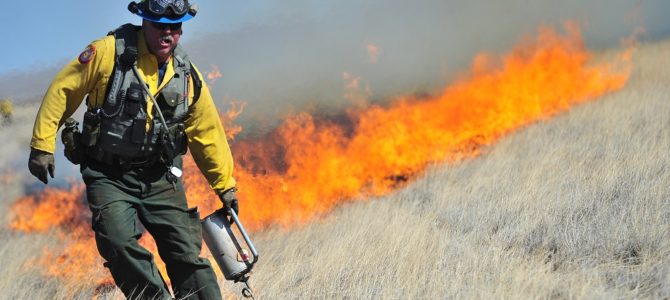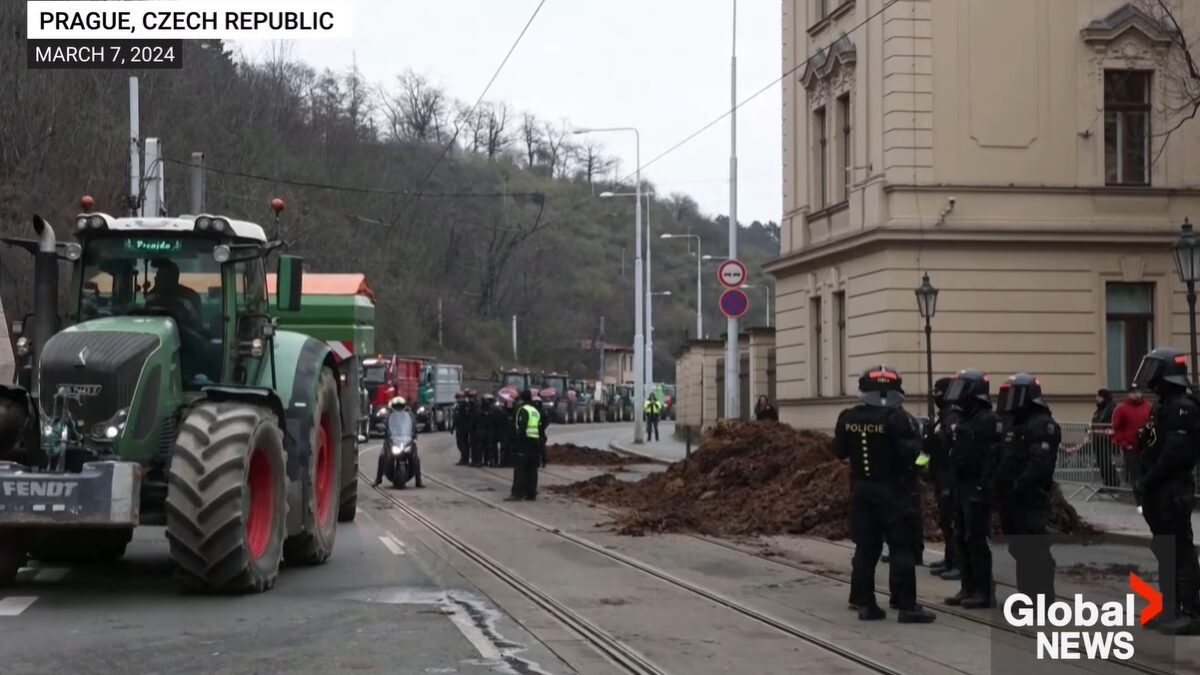
I grew up in California’s Ventura County and have family in both southern and northern California. Right now, the most deadly fire in California’s history is racing across northern California. The Camp Fire has already killed at least 56 people, burned down 7,700 homes, and destroyed the entire town of Paradise. A brush fire is also wreaking havoc on southern California. The Woolsey Fire has destroyed 98,362 acres, killed two people, and damaged several Hollywood landmarks such as the set of “MASH” and the Reagan Ranch.
Article after article blames two things for California’s frequent fires: global warming and human action. For example, a BuzzFeed article is titled, “How A Booming Population And Climate Change Made California’s Wildfires Worse Than Ever.” While dry conditions make fires more likely and people often start them, this misses the big picture. President Trump summed it up on Nov 10. He wrote, “There is no reason for these massive, deadly and costly forest fires in California except that forest management is so poor … Remedy now, or no more Fed payments!”
Trump is right. Mismanagement and overregulation deserve most of the blame, but he should keep in mind that the federal government owns 57 percent of California forest land. This mismanagement is also not a result of a lack of care. Believe me, Californians care.
Growing up, we spend almost as much time talking about fire safety as we do hiding under our desks practicing for earthquakes. We see just as much of Smokey the Bear as we do of Mickey Mouse. California and federal agencies have mismanaged forests, not because they don’t care, but because they chose the agenda of environmentalists over commonsense forest management. The result has been deadly.
The federal government owns 45.8 percent of California’s land, while 4 percent is owned by the state and 51 percent is privately owned. CAL FIRE manages both state and private land. Part of the reason it is so difficult to manage California forests is the bureaucratic milieu. The Forest Service manages 193 million acres of land, has 28,000 employees, and has an annual outlay of $7 billion a year, according to a 2017 Analytical Perspective from the budget of the U.S. government.
For decades, environmental protection schemes have usurped common sense. For example, most fire ecologists say that the surest way of preventing massive forest fires is to use prescribed burns. The California Environmental Protection Agency states that “prescribed burning is the intentional use of fire to reduce wildfire hazards, clear downed trees, control plant diseases, improve rangeland and wildlife habitats, and restore natural ecosystems.”
Prescribed burns keep forests healthy by burning up the underbrush that accumulates on the forest floor and by thinning trees. Yet for decades the Forest Service has suppressed most fires. According to a California Department of Forestry and Fire Protection executive summary: “Land and fire management have in many cases increased fire hazard. In some shrub types, fire suppression appears to have shifted the fire regime away from more, smaller fires toward fewer, larger fire.”
Despite scientific evidence, the federal government continues spending more money on fire suppression than prescribed burns. The Forest Service has performed prescribed burns on an average of 2,187,64 2 acres a year for the past ten years, according to the National Interagency Fire Center.
This means the Forest Service has only performed prescribed burns on 11.3 percent of the land they manage. When explaining to Mother Jones why the California Wine Country fires were so bad last October, fire ecologist Sasha Berleman said, “We have 100 years of fire suppression that has led to this huge accumulation of fuel loads.”
The policy of fire suppression has created what insurance companies call “mega catastrophes,” a term that describes disasters that result in insured losses of more than $1 billion. Mega catastrophes are becoming the norm in California. In 2017, there were 5,906 fires on state and private land, Kathleen Schori, an assistant chief at CAL FIRE, said in a phone interview. “Extreme fire behavior has become more commonplace,” says the Forest Service.
“The laws of the past 45 years have not only failed to protect the forest environment, they have done immeasurable harm to our forests,” said Republican Rep. Tom McClintock, who represents a northeastern district in California, in a congressional hearing. “Time and again, we see vivid boundaries between the young, healthy, growing forests managed by state, local, and private landholders, and the choked, dying, or burned federal forests.”
According to a Reason Foundation study, another flaw in forest management is a systematic reduction in timber removal. This began in 1990 when the spotted owl was listed as threatened under the Endangered Species Act. In response, the Forest Service placed restrictions on timber harvests. Additionally, President Bill Clinton introduced a rule that restricted the construction of new roads on 49 million acres of national forest. This limited the ability of the Forest Service from thinning trees. In 1993, 1,797,574 acres of wildlands burned, but in 2017 this number jumped to 10,026,086 acres.
From 1960 to 1990, 10.3 billion board feet of timber were removed from federal forest land each year. From 1991 to 2000 that numbered dropped to 2.1 billion board feet of timber per year.
“There’s an old adage that excess timber comes out of the forest one way or the other. It’s either carried out, or it burns out,” McClintock said in a speech supporting The Resilient Federal Forest Act, a bill that stops the practice of taking fire prevention funds to pay for fire suppression. It also streamlines environmental reviews so that forest managers don’t have to fill out hundreds of pages of documents just to cut down rotting and diseased trees. As of November 2017, this bill was still under consideration in the Senate.
When trees are too close together, they fight for resources. Many of the trees are weakened and become more susceptible to disease and insect infestation. These conditions turn entire forests into tinder boxes. A 2017 report from the U.S. Department of Agriculture (USDA) states that 129 million trees have died in California’s forests since 2010. The USDA report agrees with Trump — California’s forests suffer from neglect and mismanagement.
In order to cut down trees on private land, property owners must fill out a Timber Harvest Plan and get permission from CAL FIRE, said Schori. As of 1995, the private sector owned 8 million acres of undeveloped fire prone land, according to the California Department of Forestry and Fire Protection. Yet Timber Harvest Plans were only granted for 3,282,950 acres of privately owned land in 2017.
Air quality control laws also make it difficult for factories and private landowners to dispose of deadwood. The difficulty these regulations impose may prohibit private owners from effectively managing their land.
To prevent fires, both the California’s state government and the federal government need to deregulate logging and encourage the Forest Service to make a profit by selling timber. Until the environmental protests of the 1970s, the Forest Service was one of the only departments in the federal government making a profit. It is a myth that environmental concerns and business interests are always at odds. In the case of California’s forests, thinning the trees is in the interests of both parties. Trump understands this, and his administration is expanding timber sales on federal land.
Ironically, these ill-conceived environmental policies designed to ward off climate change have been the source of massive amounts of carbon dioxide pollution. A forest fire’s initial blaze releases 5.2. million metric tons of greenhouse gas emissions, according to Forest Service ecologist Leland Tarnay. This is equivalent to the amount of emissions from 1.1 million passenger cars in a year.
The Thomas Fire last year charred one of Ventura’s most beloved landmarks: a cross on top of a hill in Grant Park. Miraculously, it still stands. I am blessed that my family members are safe, but there have been some close calls. Believe me, I care about the spotted owl, but I care much more about my sister in Redding, my aunt in Sacramento, my grandmother in Paso Robles, my grandfather in Camarillo, and my mom in Oxnard.
The saddest part about these fires in California is that they are self inflicted. Californians should not allow such mismanagement to continue. At what point will commonsense forest management practices win out over the ideologically driven environmental lobby? Soon, I hope, or Paradise might not be the only thing lost.









